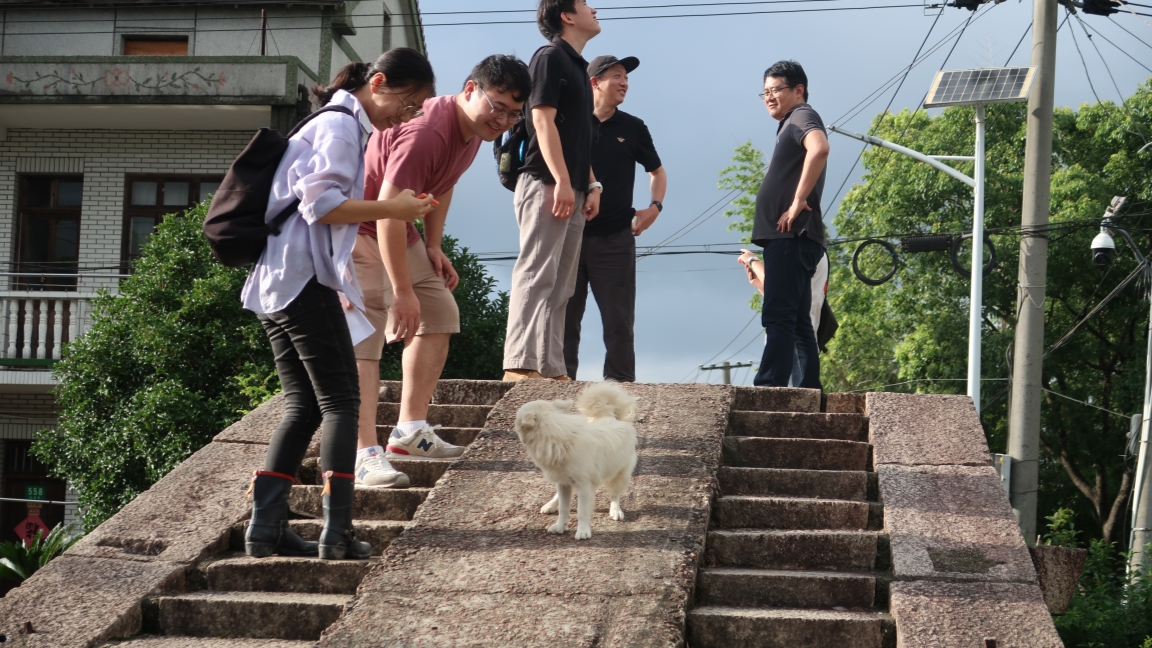
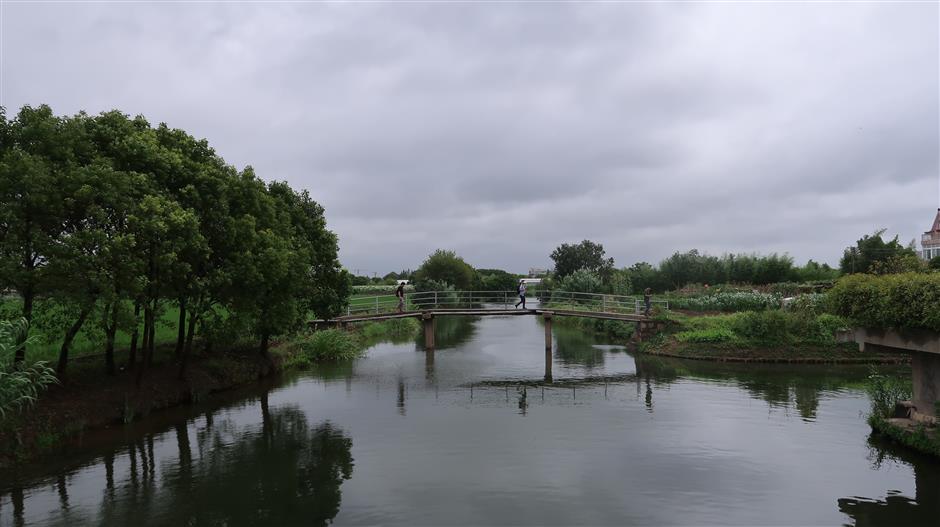
Youmou Bridge in Zhoupu Town, built in the Jiaqing era (1796-1820) of the Qing Dynasty, takes its name from the portunid crab.
In Shanghai countryside, narrow stone bridges arch over quiet creeks and empty fields. Their slabs are cracked, weeds push through the joints, and steel railings clash with the old granite.
Once essential to village life, the bridges are now the focus of a citywide restoration campaign aimed at preserving the image of the "Shanghai-style countryside."
The "Let's Repair Ancient Bridges Together" program, launched by the city's planning authority, began with four Qing Dynasty (1644-1911) bridges in Pudong's Zhoupu Town: Yaojiadian, Youmou, Yuhou and Baoyou.
Their repair will preserve relics, improve village environments and support cultural tourism.
Shanghai has 583 ancient bridges, along with more than 400 traditional houses and 265 ancient trees, according to a 2023 survey by the Shanghai Planning and Natural Resources Bureau.
Many of the bridges stand alone in farmland – solitary reminders of a Jiangnan (regions to the south of the Yangtze River) watertown past.
"Water is at the root of Shanghai," said Gu Shoubai, head of the bureau's rural planning division. "Bridges are the symbol of water."
He added the restoration is also part of a broader plan to revive hupai Jiangnan, a Shanghai expression of Jiangnan culture that combines waterways, stone bridges and rural customs.
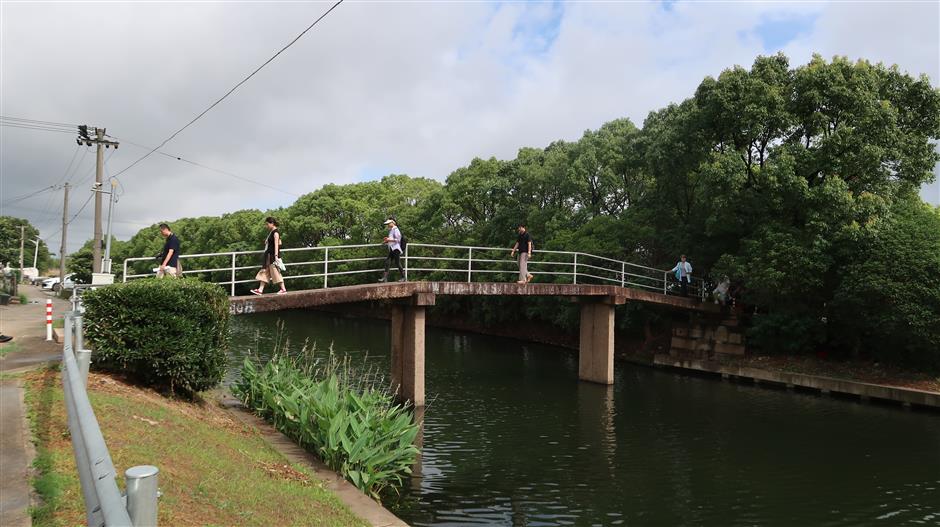
People walk on Yaojiadian Bridge, built in the Yongzheng era of the Qing Dynasty. It is best known for its engraved couplets.
For villagers, the project touches their memory. Wu Yao, 73, who married into Zhoupu's Wa'nan Village in 1974, remembers Yaojiadian Bridge filled with people when she was a new bride.
"Now the bridge is old and dangerous," she said. At a recent meeting about the repair plan, she stood with her neighbor before the drawings, reading every word carefully.
"I hope when it is repaired, I can walk across it after dinner, slowly, and recall my memories," Wu told Shanghai Daily.
Guo Nankai, a retired museum director, once taught for years in a small school beside Baoyou Bridge. He still recalls the sound of students crossing its granite slabs.
"We should repair old as old," he observed. "Restore the three original slabs of Yaojiadian Bridge, clear the blocked river to the west, and use the bridges for culture – guesthouses, wine traditions, even exhibitions of farming tools."
Lu Yongzhong, Party secretary of Beizhuang Village, was born by Baoyou Bridge.
"I've heard since I was young that the bridge had railings and looked magnificent, but I have never seen them," he said. "I hope they'll be restored, so the bridge shows its true form again."
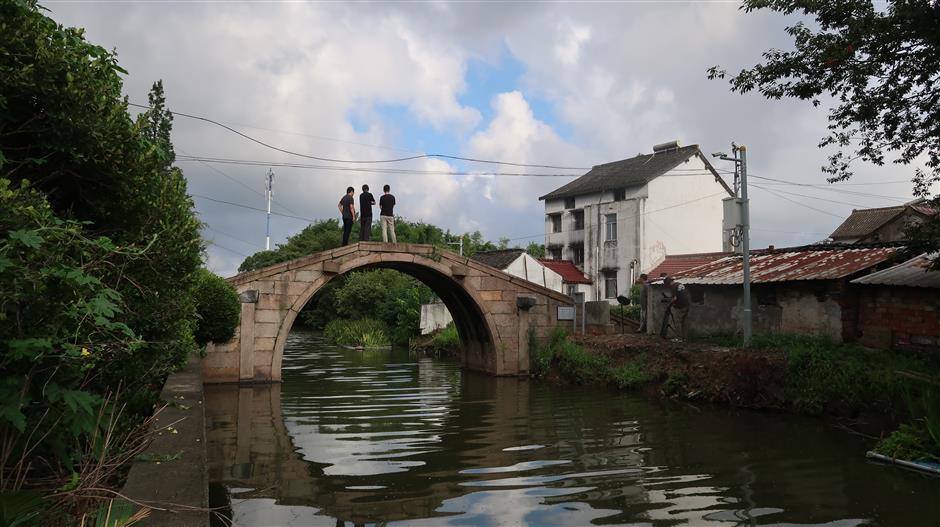
Experts check the Baoyou Bridge, a 19-meter-long arch bridge. It is the oldest surviving stone arch bridge in southern Pudong.
Each of the four Zhoupu bridges has a distinct history and plan.
Yaojiadian Bridge, built in the Yongzheng era (1723-1735) of the Qing Dynasty and rebuilt in the early 1900s, is best known for its engraved couplets.
On the east side of the bridge, an inscription reads:
"In February, people borrow wine among blossoms; in a snowstorm, travelers search for poetry."
On the west side, another inscription says:
"Boats drift past willow banks; a green flag marks an apricot village tavern."
Designers propose to restore its slabs and recall these scenes with light touches – a "floating boat" made of steel and glass beside the bridge, willow trees, apricot blossoms and a small tavern motif.
Youmou Bridge, built in the Jiaqing era (1796-1820) of the Qing Dynasty, takes its name from the portunid crab. It stands among farmland, shaded by trees. A steel railing has been bolted on for safety, but it looks out of place.
Plans call to clear the obstructions, replace missing stones, and highlight the landscape around it.
Yuhou Bridge, from the Qianlong era (1736-1796) of the Qing Dynasty, was built by a local Lu family with hopes of prosperity for their descendants.
It is a simple beam bridge of three stone slabs, about 9 meters long. Today it tilts badly to the north, its fractures covered in cement.
Experts judged it unsafe. The bridge will be dismantled, repaired piece by piece, and reassembled to restore its strength.
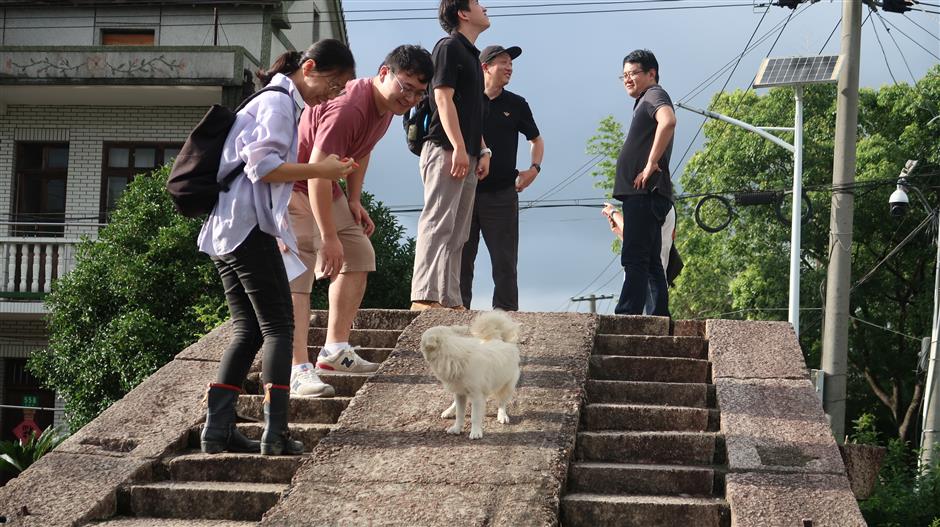
Baoyou Bridge has been well-preserved and is still used by nearby villagers.
Baoyou (literally means blessing) Bridge, first built in the Ming Dynasty (1368-1644) and rebuilt in the late Qing Dynasty, is the oldest surviving stone arch bridge in southern Pudong.
Nearly 19 meters long, it is formed of large granite blocks, with a semicircular arch where boats still pass.
Villagers cross it daily, though plants grow thick across its stones and its railings are gone.
Restoration will bring back the railings, fix broken parts, and add viewing platforms, bamboo groves, and riverside paths.
"The bridges are not only crossings," said Cao Sheng, chief engineer at Tongji University's Rural Planning and Construction Institute, who leads the restoration project.
"It is a way to coordinate the lives of villagers, rural tourism, and cultural heritage together."
The four bridges were chosen because Zhoupu Town has been a pilot zone for rural revitalization. Work there already includes farmland repair, river clearing, and rural roads.
"We are not repairing one bridge in isolation," said Gu. "We are bringing the bridges back into the life and fabric of the villages."
Funding is a challenge. A single slab of Jinshan stone can cost as much as 200,000 yuan (US$28,000).
To cover costs, Zhoupu is drawing from its rural revitalization, river management, and tourism budgets.
Officials also plan to connect restored bridges to Shanghai Disney Resort and Zhoupu Flower Sea to attract visitors and generate income. Completion of the four Zhoupu bridges is expected by this winter or next spring.
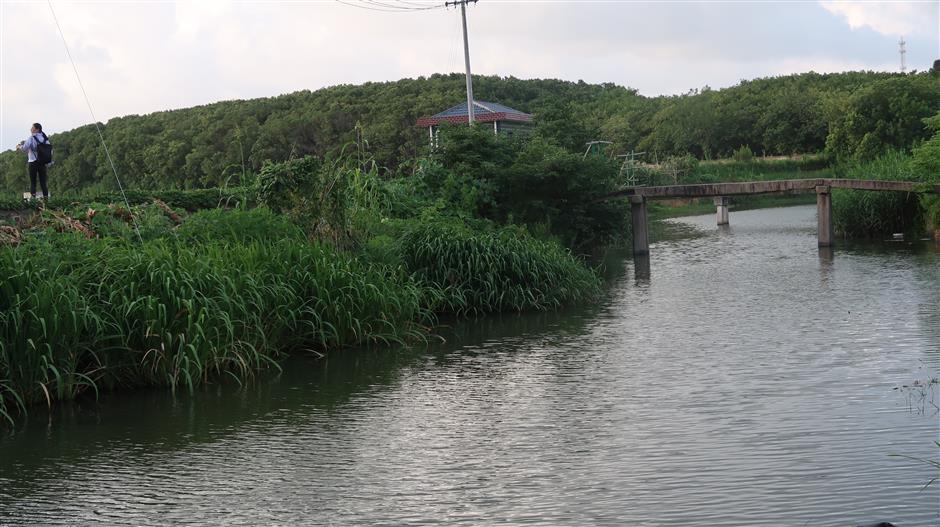
Yuhou Bridge has been judged unsafe and will be dismantled, repaired piece by piece, and reassembled to restore its strength.
International examples show the path. In France, the medieval Pont Valentré in Cahors was restored with traditional stone masonry, its upkeep supported partly by tourism.
In the United Kingdom, the National Trust repaired rural bridges using local stone and tied them to walking trails, blending preservation with visitor activity.
International visitors often highlight the charm of such living heritage. "A beautiful watertown with old bridges, canals and cobblestone streets. It's a glimpse of the old lifestyle that's still alive," said Noel T., a traveler from Singapore.
Tragio, from Artemida, Greece, said he took about an hour by Metro from central Shanghai to reach a water-surrounded village in suburban Qingpu District. "A little Venice, I can call it. When in Shanghai it's a must," he added.
Elsewhere in Shanghai, another bridge tells of sacrifice.
In suburban Jinshan District, Huaigong Bridge was built in the 1900s by a local teacher Xu Rongkai, who sold farmland to pay for it after floods destroyed a wooden crossing. Without the bridge, villagers were cut off from neighboring Songjiang.
His son, Xu Zhongze, now in his 80s, still often sits by the bridge.
The riverbed beneath is long dry, cracked and filled with weeds. But Xu tells visitors the story of his father's decision. Villagers named it Huaigong to honor him.
"The bridge carries my father's story," he said.
Shanghai has 34 bridges and tunnels crossing the Huangpu River and more than 20 across Suzhou Creek.
By contrast, the old rural bridges are narrow and often hidden in farmland. Their repairs may not change the skyline, but preserve Shanghai's water town heritage and the memories of its villages.

Xu Zhongze often sits by Huaigong Bridge in suburban Jinshan District to protect the legacy of his father.

